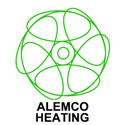Oil fired boiler service
Our oil fired boiler service is an annual check-up of your boiler, which is thorough and gives the technician a chance to look for other issues that may arise with your boiler at a future date. Don’t let this happen! Let our oil technician deal with the problem before it happens, so you don’t get caught out at an inconvenient time. Below you will find information on what factors to consider with oil boilers, the service procedure and the brands of boilers we have experience of working with.
Factors to consider
A good oil-fired central heating system will contain the same controls as a modern gas-fired system. In particular it should have:
- a room thermostat, ideally located in a living room, not the hallway
- thermostatic radiator valves (TRVs) on all but one of the radiators
- an electronic 7 day timer with separately programmable hot water and room heating
- a cylinder thermostat on the hot water tank
- the boiler and thermostats wired in an interlock to prevent short-cycling when there is no demand for either hot water or room heating
Modern oil-fired boilers can be highly efficient and manufacturers claim net seasonal operating efficiencies of up to 97%. As with gas boilers, condensing boilers are likely to offer the greatest efficiency, and there are now over 90 “A” rated models on the market. From 1st April 2007 it became mandatory to install condensing oil boilers to comply with Building Regulations. You can check how a boiler rates by visiting the SEDBUK website, but it is worth noting that non-condensing boilers have their rating capped at 85.7% for the purposes of the SEDBUK database, even if test results have shown an efficiency above this. For more information you are recommended to speak to a reputable boiler manufacturer or installer.
Oil boilers are available with both balanced flues (where the air for combustion is drawn in through a pipe concentric with the extract flue) and with open flues, where the air for combustion is drawn from the room in which the boiler is sited. Although Building Regulations permit both types of boiler to be located in domestic garages, we recommend that only balanced flue boilers are used in those areas. Most modern boilers use a pressure jet burner; although some vaporising burner machines are still available on the market, they may only be fitted into a limited number of locations.
Almost all UK domestic central heating systems use 28sec oil, which is sometimes known as kerosene. This fuel burns more cleanly than heavier oil products such as gasoil, which is also known as 35sec heating oil. 28sec oil can also be used in kitchen ranges such as AGA cookers.
As the sulphur content of oil has fallen, some domestic oil suppliers have added additional lubricants to kerosene to enable fuel to be pumped to the boiler more easily. This is not usually necessary for most systems, as modern pumps have been engineered to operate effectively with low-sulphur fuels, but if you are unsure if you would benefit from using such fuels, speak to your equipment supplier.
HVO (Hydrogenated Vegetable Oil) is on it way!
A modern high-efficiency oil system can provide an environmentally acceptable alternative, especially for homes that are not connected to the gas main. As with all heating systems, regular servicing will help the boiler burn more cleanly and efficiently, and it is important to match all boilers to modern central heating controls.
Many people are concerned by the threat of Global Climate Change, and are keen to reduce their personal emissions of carbon dioxide (CO2), the main gas contributing to this effect. Official figures from the UK’s Department for the Environment, Farming and Rural Affairs (Defra) indicate a carbon content for domestic heating oil (kerosene) of 0.24kg CO2 per kWh, compared to figures of 0.214kg CO2 per kWh for LPG and 0.19kg CO2 per kWh for gas. However, these figures are for gross calorific values, and a typical “A” rated condensing oil boiler achieving 95% efficiency would be responsible for around 5% more CO2 in use. Equivalent gas condensing boilers are a little less efficient, reducing the carbon penalty for oil systems to less than 10% compared to LPG and around 20% for mains gas.
Although there is no legal requirement for oil boilers to be installed by a specially trained person, we strongly recommend that all servicing and installations are carried out by people registered with OFTEC, the Oil-Fired Technical Association, as the manufacturers will only validate guarantee when properly installed and commissioned by an OFTEC registered engineer.
You may also have to check whether or not your house insurance is current and up to date, if you do not use an OFTEC registered engineer.
We also recommend that all oil-fired systems are fitted with an automatic shut-off in the event of fire. This will prevent a fire spreading to the external oil tank. Most tanks are now made of plastic and so are easy to maintain; there are quite complex regulations on where they may be sited, your OFTEC registered engineer will be able to advise you on these matters, if you do not have one, you can contact your local Council’s Building Control Officer, who should be able to advise you on these. All boiler installations are required to conform to Part J of the Building Regulations, and oil-fired systems should also meet British Standard BS 5410.
Servicing
Appliances should be periodically cleaned and components replaced as required when the boiler is being serviced. If your boiler is not serviced annually it is at higher risk of breaking down and costing you more money.
Cleaning the boiler gives the service technician a chance to look for other tell tale signs that parts of the boiler may need replacing, and to inspect the boiler combustion chamber, which provides an opportunity to inspect the condition of the material and welds. Old steel heat exchangers will often leave a rust mark which can give a warning that the boiler will soon need to be replaced. This provides an opportunity to plan the work rather than have the inconvenience of trying to arrange a repair at short notice when a heat exchanger unexpectedly fails.
Long term damage can also occur if the boiler is not serviced regularly. During the combustion process, when the air mixes with oil and is burnt, deposits such as sulphur build up on the internal surfaces of the heat exchanger and the baffles, which redirect the flow of flue gases inside a boiler to make it less efficient. If left for a number of years these deposits harden and with some designs of heat exchanger render it impossible to remove the baffles without destroying them. A replacement baffle will come at a significant cost on to the routine service charge.
Having an oil fired boiler serviced regularly can keep it operating at its most efficient. This reduces fuel bills and saves money on costly call out fees for unexpected breakdowns, it is recommended that oil fired appliances and equipment are serviced at least once a year or as recommended by the manufacturer.
There are many reasons why the efficiency of an oil fired boiler could be reduced. Here are a few:
- Excessive smoke and partially burnt fuel deposits soot on the heat exchanger which restricts the amount of heat which the heat exchanger can transfer into the water. A heat exchanger carries water around the boiler, absorbs the heat from the hot flue gasses and transfers it into the water. The cleaner the heat exchanger the more efficient the boiler will be
- Oil Nozzles will wear. They regulate how much oil is used and if it is not regularly replaced it could cause “sooting up” of the heat exchanger, and so reduce heat transfer
- Photocells can glaze over with soot. Photocells are an important safety feature which detects whether the flame is lit. If a photocell is dirty it may not be able to monitor the flame correctly and could cause the boiler to shut down randomly causing inconvenience. Boilers switching on and off frequently will be less efficient than when running for longer periods
- Electrodes can wear and carbon up. Electrodes make a spark to light the fuel, if they are worn or covered with carbon it will cause poor ignition so the boiler may not light. Again, causing inefficiency and increasing fuel cost. Efficiency is decreased as soot builds up within a heat exchanger. For example, 3.0mm layer of soot can reduce the amount of heat absorbed by more than 8%
- Clean primary air combustion fan and housing
- Remove and clean blast tube and check condition
- Clean electrodes and inspect ceramic holders
- Remove existing pressure jet nozzle and replace with a new one
- Check electrode dimensions
- Replace blast tube
- Remove and clean flame failure device (photocell). Reinstate and check for operation and safety cut off
- Replace or clean oil filters
- Remove, clean and check all baffles including any turbulators
- Clean all boiler flue ways up to and including the first flue bend
- Clean and check combustion chamber
- Replace all Baffles after inspection
- Refit burner, fire up and test
- Carry out full combustion test and record results
- Check fire valves for correct operation
- Check room ventilation
- Check all electrical controls i.e. programmer, time clock and stats
- Inspect oil tank
- Check oil line integrity
- Complete CD11 (OFTEC Service completion record)
Oil fired boiler brands
There are the brands of oil fired boilers we have experience of installing and servicing:

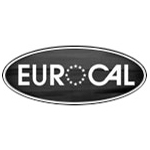
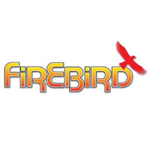
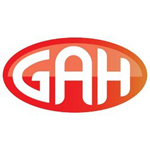
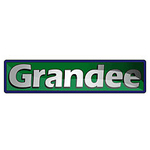

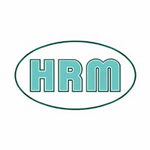
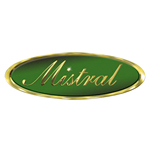

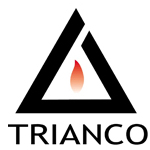
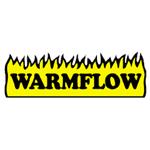

Payment options
- Visa
- Visa Debit
- Visa Electron
- Mastercard
- Discover
- Diners Club
- Maestro
- JCB
Areas covered
- Alresford
- Fareham
- Hambledon
- Lyndhurst
- Romsey
- Southampton
- Stockbridge
- Winchester
